Text
hello! this is your annual reminder that Valentine's Day as a celebration of romantic love was not "invented to sell cards" or whatever other minor conspiracy theories are floating around
the earliest known association between the day and romantic love was in Chaucer's The Parliament of Fowles, a poem written in 1382. the oldest known Valentine tribute exchanged between lovers was written by Charles, Duke of Orleans to his wife in the 15th century. it's also mentioned in Hamlet
have a happy Valentine's Day, Pal-entine's Day (my alternative to Galentine's, because as a lesbian I'd be having that even with a partner), or just a wonderful day in general!
565 notes
·
View notes
Text
I have to tell you all that this collection is on sale too, and the sale ends on 30th December.
I don't know if you're ready for this BUT American Duchess and the Bata Shoe Museum just launched a collab collection called In Bloom.
They made 3 styles in several colours using 3 styles from the the 18th, 19th and 20th centuries from their current exhibition "In Bloom: Flowers and Footwear", and are currently in pre-sale, with estimated deliveries between July and August 2023.
Let's take a look:
We start at the 18th century with the Primrose shoes, based on their Dunmore model, accurate for 1770s-1790s they are embroidered on satin and are $179 USD while in pre-sale and later will be $199. The original style is in black and pink silk satin, and OF COURSE that's my favourite variation, but the green ones are a close second.



Images from top: 1780s shoes, Bata Shoe Museum / Primrose shoes, American Duchess.
From the 19th century we have this style called Flora, accurate for the late 19th century (1870s-1900), are $230 USD while in pre-sale and later will bee $250. This embroidered boots with satin ribbon laces are probably my favourite style from the collection. Of course my fave colour is black, which is also the colour of the original piece, but the lavender ones are just *chef kiss*:
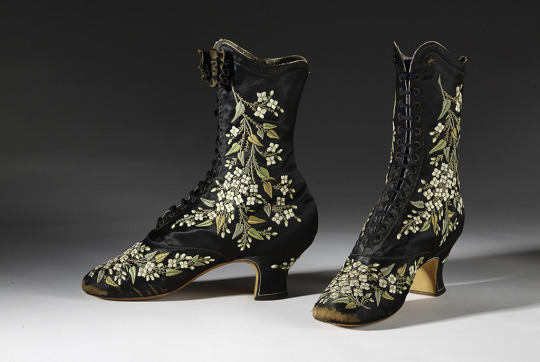


Images from top: the original French embroidered boots by Francois Pinet, late 1870s-early 1880s, Bata Shoe Museum. / Flora boots, American Duchess
Finally, the 20th century style is the Daisy, accurate for the 1920s-1940s. A vintage style full of flowers and colour, this T-strap style is perfect to pair with a simple dress from any decade and have a very decent 6.3cm heel, so you can dance all night in these art deco shoes.
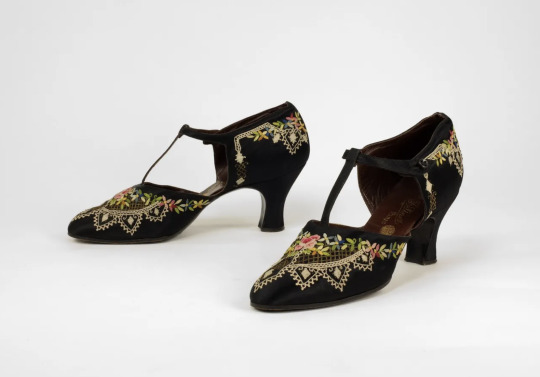
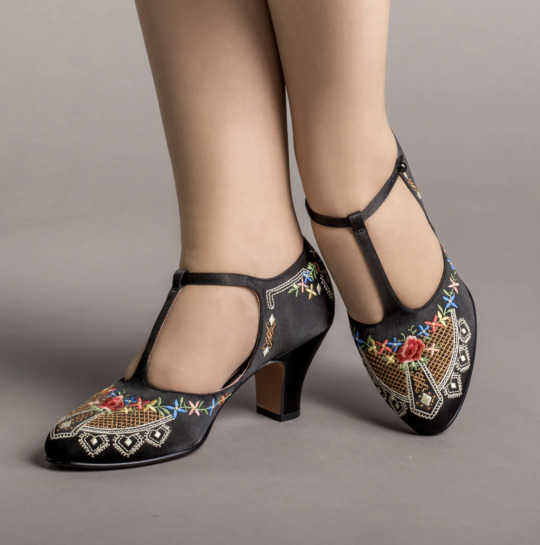
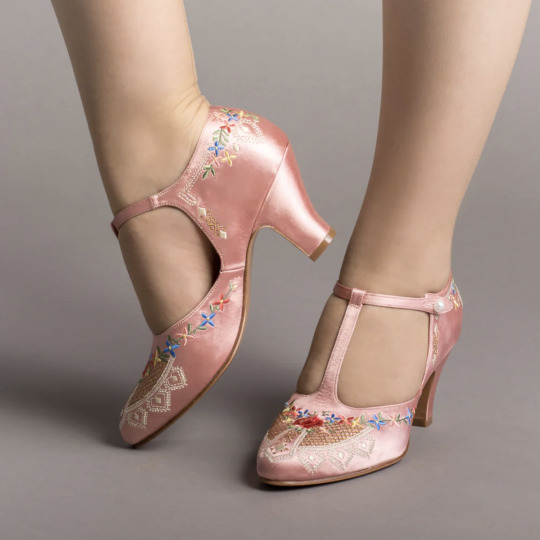
1920s shoes, Bata Shoe Museum / Daisy shoes, American Duchess.
The sales from the In Bloom collection will support The Bata Shoe Museum in their study, outreach, and conservation of historic footwear, and we're here for it.
More info:
"In Bloom: Flowers and Footwear"
Read more about the collaboration at the American Duchess Blog.
Buy the whole collection in pre-sale here.
Which style are you looking for the most?
8K notes
·
View notes
Text
A reblog for the morning people 😌
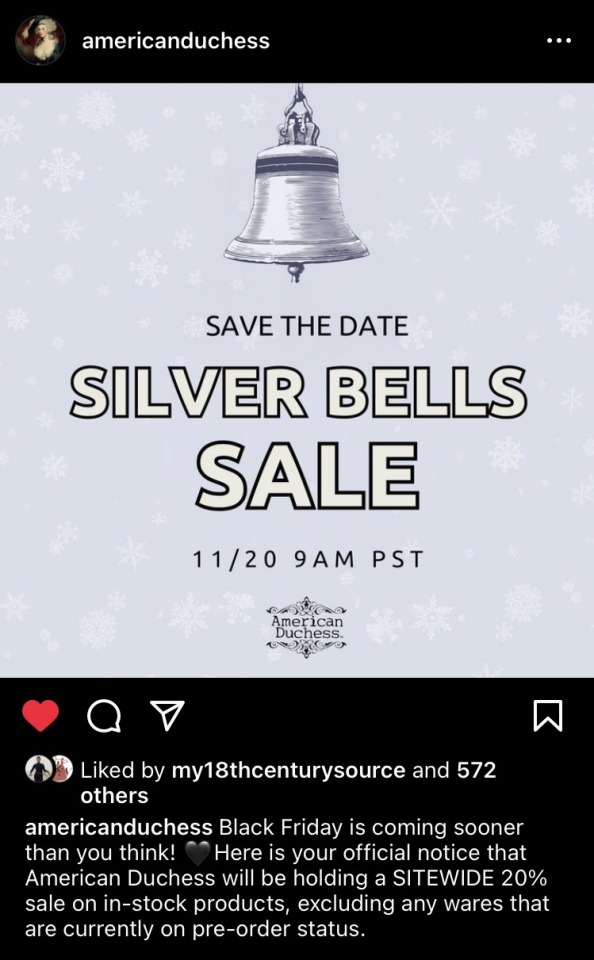
I DON’T KNOW HOW TO BE CHILL ABOUT THIS!!!
But get ready because the sale starts tomorrow, November 20th.

Just click here and it will take you to the site.
And good news for all of you that want pretty shoes but have a hard time, they have made a fee changes! They now have some models in wider fit, and new several styles with no heels. And for all of you who are scared of heels, their lower ones are usually more comfy than flats, so do not fear!
I think I’ll be having the Parker shoes in black:

I just love them! What is in your wish lists?
68 notes
·
View notes
Text

I DON’T KNOW HOW TO BE CHILL ABOUT THIS!!!
But get ready because the sale starts tomorrow, November 20th.

Just click here and it will take you to the site.
And good news for all of you that want pretty shoes but have a hard time, they have made a fee changes! They now have some models in wider fit, and new several styles with no heels. And for all of you who are scared of heels, their lower ones are usually more comfy than flats, so do not fear!
I think I’ll be having the Parker shoes in black:

I just love them! What is in your wish lists?
68 notes
·
View notes
Text
#for me it is always cutting#my least favourite part#i get so tired!#and it takes me SO LONG#i usually pick one or two days for only cutting
1K notes
·
View notes
Text
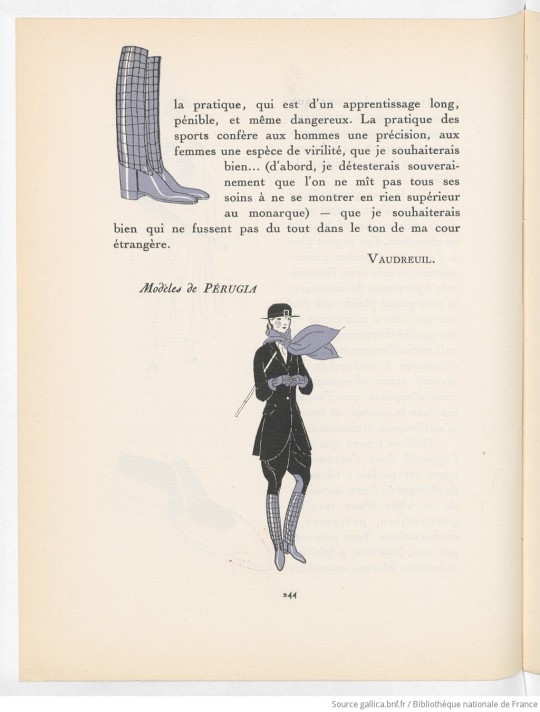
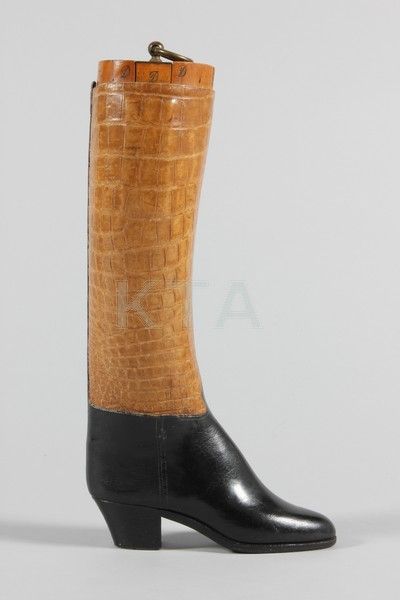
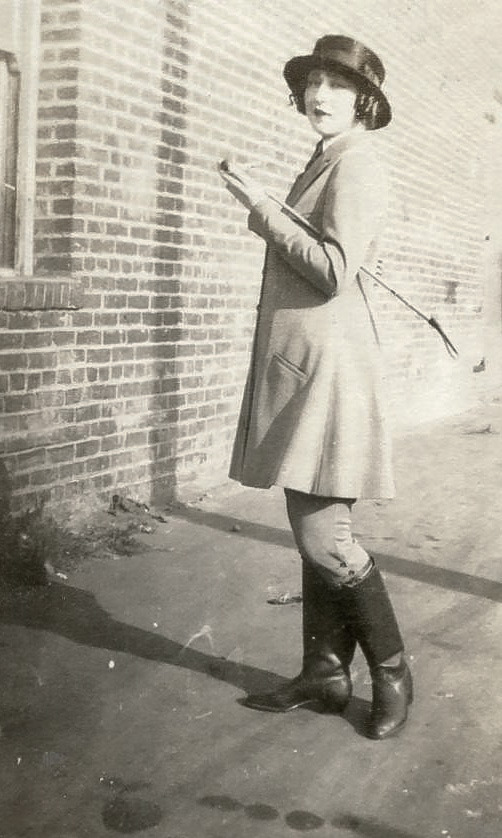

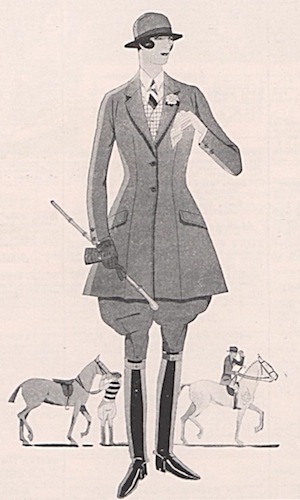
Was reading La Gazette de Bon Ton from (almost!) 100 years ago the January 1924 edition) and there's this little article about sports shoes by Perugia with examples for skating, tenis, golf, and riding, and I thought "I've seen those boots before!", so I went looking for them and here we are: crocodile riding boots by André Perugia from the 1920s as reported in this French magazine and some outfits to complement.
Images from top:
Illustration of Perugia boots and outfit, illustration by Pierre Mourgue, La Gazette du bon ton : art, mode et frivolités, January 1924.
Riding boots, Perugia, circa 1920, sold at auction.
Gladys Wagner (model and dancer) modeling a riding habit in San Francisco, 1920s.
Woman’s Riding Habit, 1920s, The Museum of Fine Arts, Boston.
Saks Fifth Avenue ad Illustration, spring 1925.
#shoes#1920s#1920s shoes#boots#riding boots#andre perugia#perugia#la gazette du bon ton#riding habit#riding ensamble#gladys wagner#not 18th century
29 notes
·
View notes
Text
17th century gloves are A MOOD. A MOMENT.
Baroque accessories are not here to play.
17th century gloves are. very good.
893 notes
·
View notes
Text

Justo for reference, and adjusted with inflation the price would be, in 2023 usd, for her $6,025.36, and for him $7,477.36
That 1926 magazines called me poor in many ways.
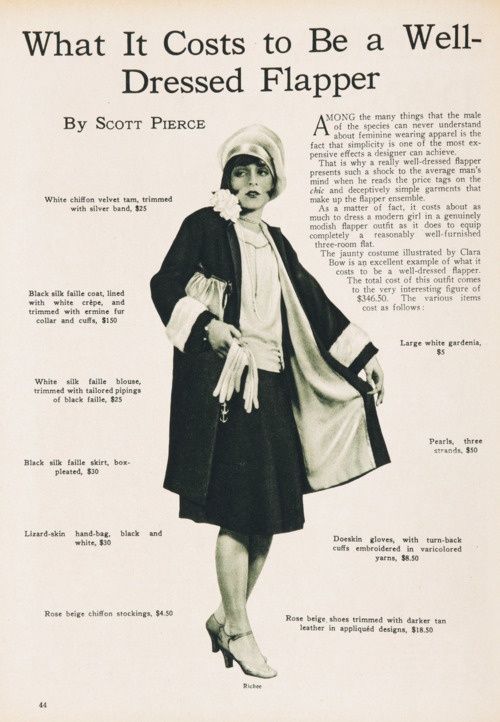

What it costs to be well dressed back in 1926?
Short answer: A LOT.
Long answer: check the pages above and know the details. And if you're like me, your lack of white gloves and lapel flowers.
Also, what better pair to illustrate the perfectly dressed other than Clara Bow and Ramón Novarro? Ok, OK, OK, I prefer Coleen Moore over Clara Bow BUT Ramón Novarro is PERFECT.
416 notes
·
View notes
Text
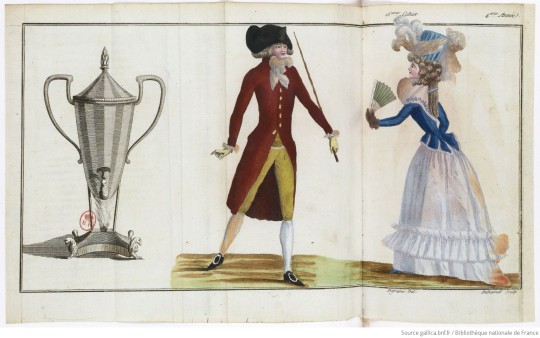
Here an illustration from the Magazine des Modes Novels Françaises et Anglaises, number 16, 1st of May 1789.
Does that date tell you anything?
Here we see:
A small silver hand-washing fountain, or toilet fountain, decorated in stripes.
A young man in an oxblood coat with plain polished copper buttons, breeches and waistcoat in lemon yellow, a hat á la Androsmane, the hair is tied in a tail, the shirt is simple, and the cravat is finished in lace, the gloves are of yellow leather and the stockings white. Note that the coat is buttoned from the first button, a fashion very young and for a colder weather, and the author considers that the fashion of folding the ribbon of the hat buttons is not going to be adopted, since it adds no wealth or elegance to the look (laughs in post-French Revolution fashion).
The young woman wears a blue taffeta caraco, white petticoat with long ruffle with a zig-zag trim, an white gauze fichu embroidered in blue is worn puffy at the fro n and long at the centre back, a turban bonnet made of blue pleated taffeta and decorated with feathers at the front, and a green paper fan.
#18th century#18th century fashion#toilette#france#england#may 1789#1789#menswear#womenswear#I saved way too many images from fashion plates#i regret nothing
22 notes
·
View notes
Photo
This is such a @vinceaddams post that I was surprised it wasn't from his blog!
Aaaaaaanyway, these gloves are in the Metropolitan Museum of Art collection but not in view.
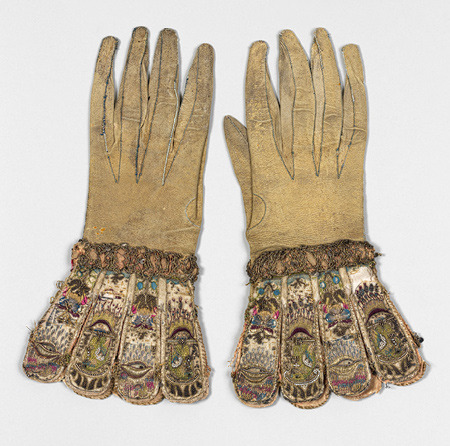
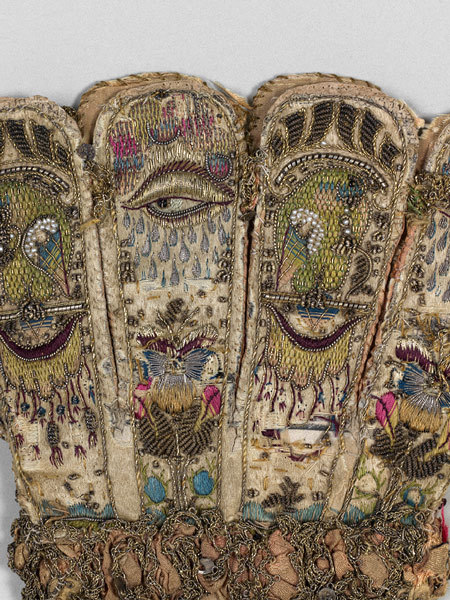
Pair of gloves, ca. 1600
English
Leather; satin worked with silk and metal thread, seed pearls; satin, couching, and darning stitches; metal bobbin lace; paper
2K notes
·
View notes
Text
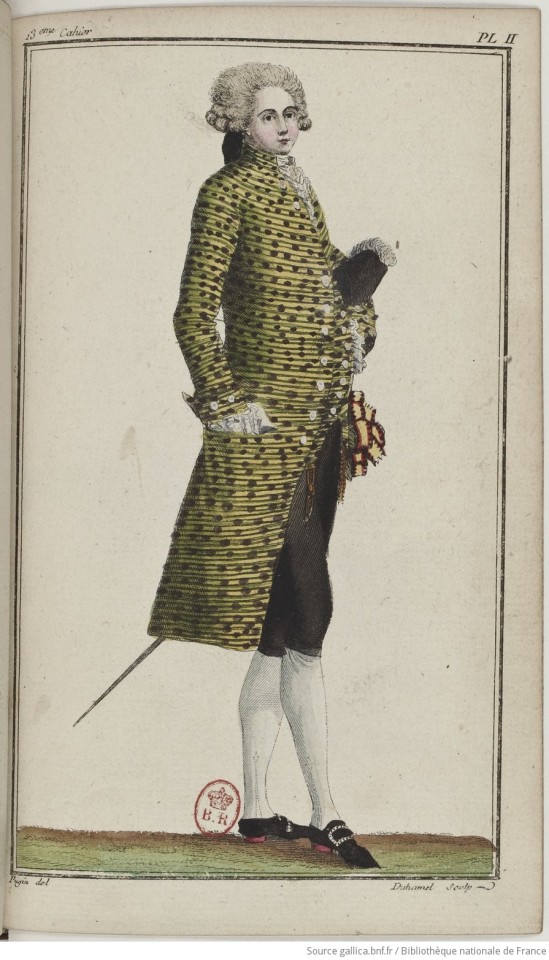
Planche 2, Cabinet des Modes, May 15th 1786, Bibliothèque Nationale Française.
We already looked at the female look for this Cabinet des Modes edition, here we have the male, which I LOVE, because late 18th century menswear is just *chef kiss*. The description is a little shorter than the one for the woman, but here we are in my loose and shortened rough translation:
Plate 2
The coat and waistcoat of the man shown in this plate, are made of spring velvet in a lemon green background with green stripes and lilac spots. The buttons that decorate the coat and waistcoat are enameled and speckled in a contrasting colour. The breeches are made of black liver cloth and the fit is snug/tight. The stockings are white and the shoes have red heels (this fashion is not for everyone) (...). The man wears a white plumed hat on his arms, and lace ruffle on his wrists. He has his left hand in his waistcoat pocket, and his right in his coat pocket.
#18th century#18th century fashion#menswear#green#green menswear#cabinet des modes#fashion plate#1786#1780s#late 18th century
30 notes
·
View notes
Text

Planche 1, Cabinet des Modes, May 15th 1786, Bibliothèque Nationale Française.
This plate has a LONG description, and here's a (shortened) rough translation of the description:
We can say it is no longer desirable for women to dress with great adornment (...) and these fashions are no longer made but for ceremonial gatherings, weddings, formal balls, large meals, which take place in very small numbers. This justifies us to not have often representations of these garments (...), nevertheless since they re sometimes worn, we show them in plates 1 and 2.
In plate 1 we can clearly see that we no longer wear the big paniers and even in the most adornment, the fashions have been simplified (except, of course, the court clothes, which do not vary much and can be traces to the clothes of our fathers) (...).
The woman in Plate 1 wears a blue robe à la Turque. The petticoat is of the same fabric and colour, the sleeves are made of white gros-de-Naples or another white fabric. The trim of the dress is in white crepe in the shape of rosettes, and in the middle of each is bouquet of artificial roses. The skirt of also decorated with white crepe and rosettes similar to the dress. The cuffs attached to the sleeves are made of cut white gauze. The throat is covered with a gauze fichu, tied at the front with a rainbow ribbon bow, she wears white leather gloves, and a fan. The head is covered with a bonnet also tied with a rainbow ribbon and topped with a garland of artificial roses. The ribbon forms a large bow at the back and holds a white crepe veil that falls almost to the waist, and on top of the bonnet rises a set of feathers: two rose, two blue, one white, and one green. The hairstyle has light curls along the entire front of the head, her hair is pulled up at the back in a flat bun, and two large curls on each side fall down her length. Her shoes are blue to match the colour of the dress, and are adorned with rainbow ribbon.
I found many funny things in this description, like that the magazine writers thought in 1786 that this look was simple, the concept of rainbow ribbon (ruban à l'Arc-en-Ciel) that seems to simply be a ribbon in colourful stripes, and the size and complexity of that bonnet. How about you? Please let me know in the comments or reblog tags, what is your favorite part of this outfit, or even if you'd like to reproduce it.
Also, the plate 2, that is a men's outfit, will be posted soon :)
#18th century#18th century fashion#cabinet des modes#1780s#1786#france#womenswear#blue#blue womenswear#fashion plate
61 notes
·
View notes
Text
OF COURSE!
This is from The American Ballet Theatre production of Gaîté Parisienne from 1988.
Also: the level of ICONS in that photo.
And here some MORE photos from his production:


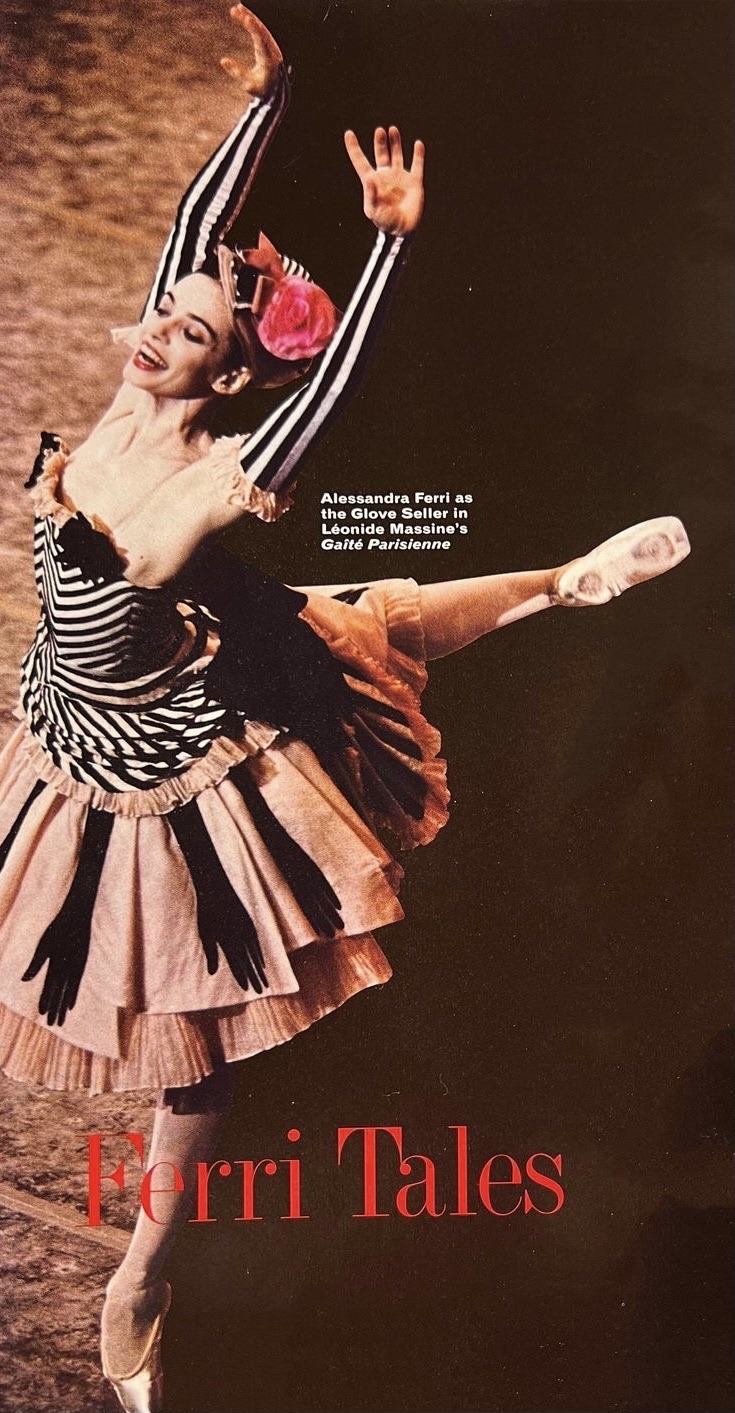
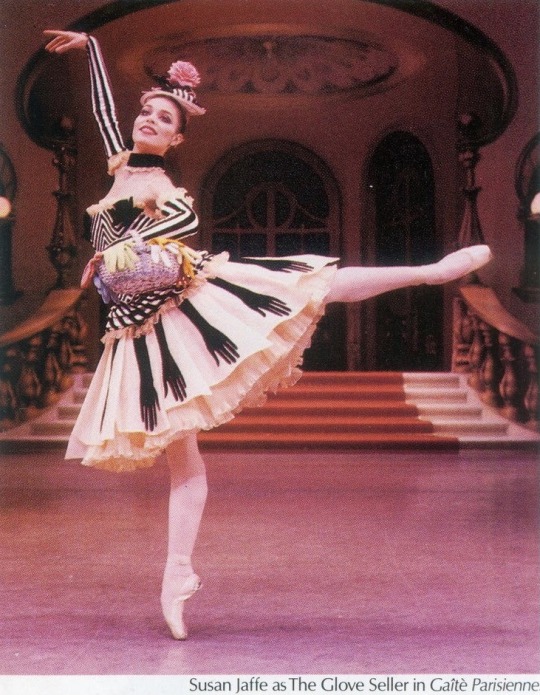
#ballet#costume#costume design#alessandra ferri#susan Jaffe#christian lacroix#Gaîté Parisienne#Léonide Massine#mikhail baryshnikov
104 notes
·
View notes
Text
Oooooh!
When I recover my will to live and sew, I should make this!
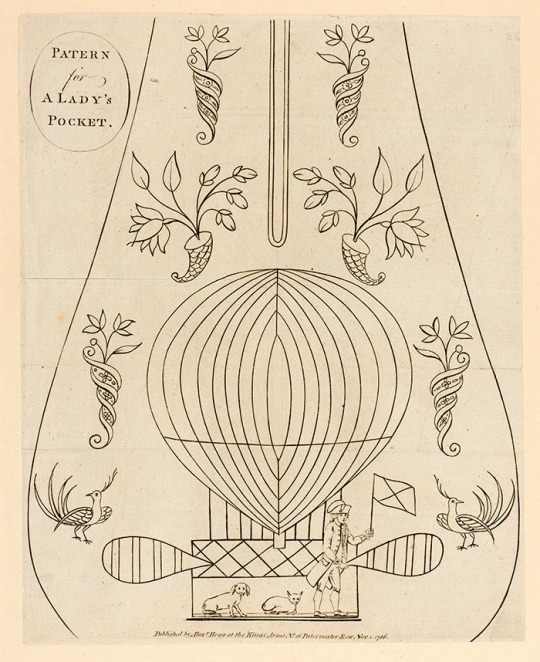
153 notes
·
View notes
Text
Ugh! That’s THE WAY The Rite ofSpring FEELS.
In other unrelated news, the company I dance at will be dancing a choreo with te Rite music, so, apparently there’s an infinite number of times I can listen to it and never get bored.
“I was sitting in a box in which I had rented one seat. Three ladies sat in front of me and a young man occupied the place behind me. The intense excitement under which he was laboring, thanks to the potent force of the music, betrayed itself presently when he began to beat rhythmically on the top of my head with his fists. My emotion was so great that I did not feel the blows for some time. They were perfectly synchronized with the beat of the music. When I did, I turned around. His apology was sincere. We had both been carried beyond ourselves.”
— American writer and music critic Carl Van Vechten on the premiere of The Rite of Spring. Paris, May 29th, 1913.
4K notes
·
View notes
Text
If you all do not already follow The Art of Costume Podcast, go do it now! They are great and often they have in the show the costume designers of the show/movie they’re talking about!
Their last episodes are like a list of the faves of this blog (and its readers): Crimson Peak, Penny Dreadful, Sleepy Hollow, and Interview With The Vampire (the 90s film). So, go and enjoy wherever you listen to your podcasts! (That sounded like and ad, but I just really like that podcast XD)
163 notes
·
View notes
Photo
Another obligatory reblog, and I’ve been thinking I should make a new list focused on 19th century set 🤔
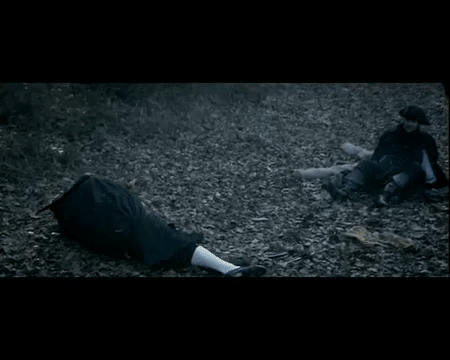
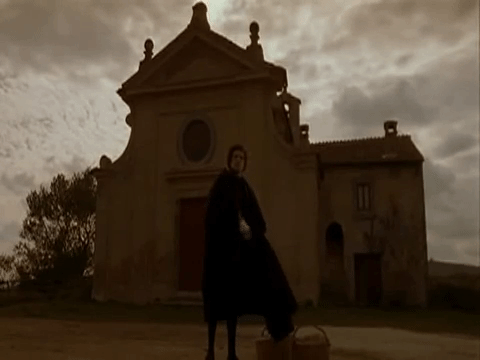

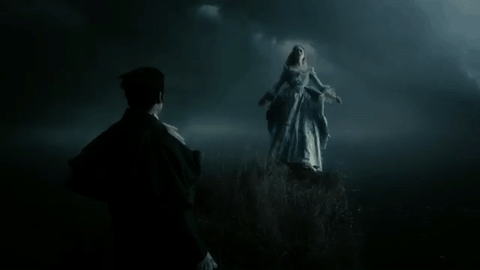

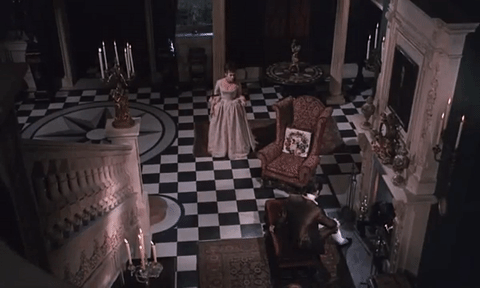
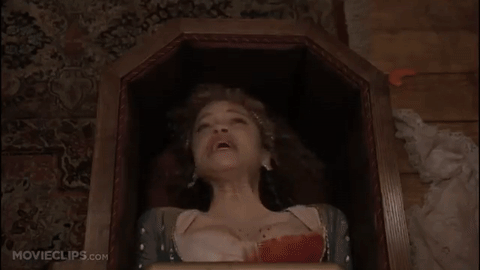
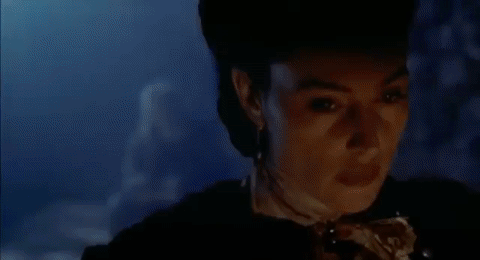
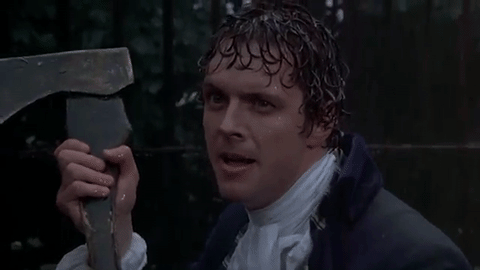

Horror is a genre I love. Frights, ghosts, monsters, legends, vampires and witchcraft are THE stuff I love the most during October (ok, all year long) and after the anonymous ask about what to watch in the style of Sleepy Hollow (1999, Tim Burton) I put together this list of films set in the 18th century:
Devilwood, 2006, Sacha Bennett. An unknown man arrives to a small village, then a woman looking for him. No one expects who they really are. This a very short film, and you can look at it on iTunes.
L'arcano incantatore (Arcane Sorcerer), 1996, Pupi Avati. A seminary students who falls for a woman is forced to flee and takes refuge with an excommunicated priest, who used to practice black magic.
Herz aus Glas (Heart of Glass), 1976, Werner Herzog. A prophet predicts the destruction of a glassblowing factory; the main artisan is dead but the owner is strangely obsessed with the ruby red glass.
Dark Shadows, 2012, Tim Burton. Only the beginning is set in the 18th century BUT it’s such a pretty film u.u
Pirates of the Caribbean: The Curse of the Black Pearl, 2003, Gore Verbinski. What’s better than pirates? Ghost pirates.
The Black Torment,1964, Robert Hartford-Davis. A classic film about this nobleman who gets back home with his new wife, even though there are rumors of him being a murderer.
Interview with the Vampire: The Vampire Chronicles, 1994, Neil Jordan. For this melancholic vampire, the only thing worse than dying is living forever. And this film is FULL of eye-candy: Brad Pitt, Antonio Banderas, Christian Slater and Tom Cruise (as the most perfect Lestat ever).
Le pacte des loups (Brotherhood of the Wolf), 2001, Christophe Gans. A mysterious beast is killing a lot of people and two men are sent to investigate.
And Now the Screaming Starts!, 1973, Roy Ward Baker. This film is old fashioned but fun: Catherine has just married Charles Fengriffen and moves into his castle but, of course, there is an old curse that lays on the family.
Mary Shelley’s Frankenstein, 1994, Kenneth Branagh. Victor Frankenstein created life. And there will be unpleasant consequences.
And just because reasons, here are two bonus films:
Sleepy Hollow, 1999, Tim Burton. Because this film started all about this post.
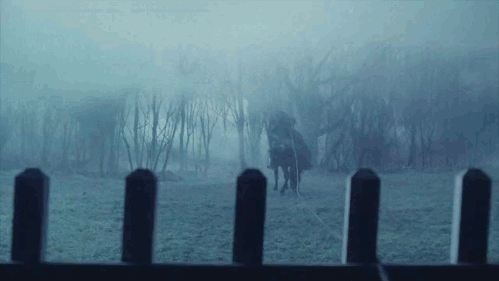
Perfume: The Story of a Murderer, 2006, Tom Tykwer. I know, this is thriller and not horror BUT there’s Ben Whishaw. And I love him.

411 notes
·
View notes